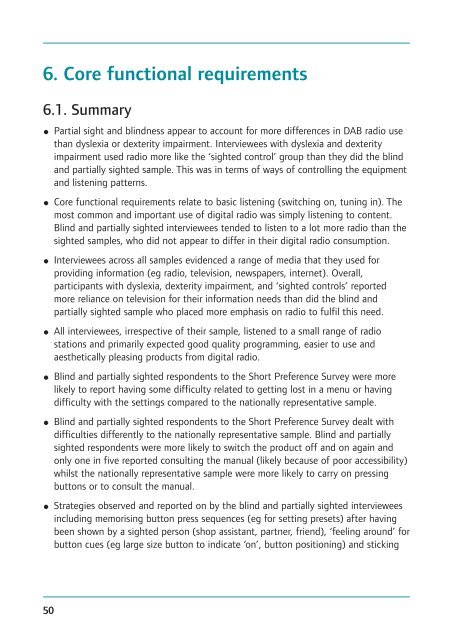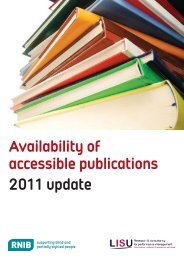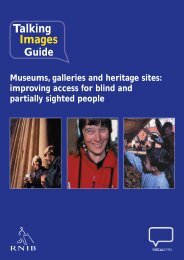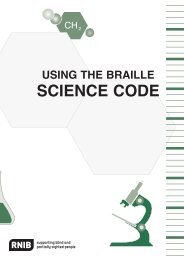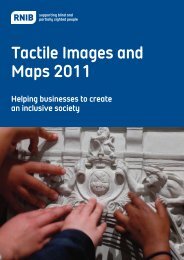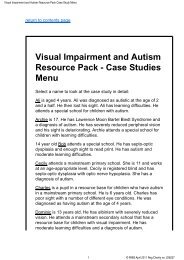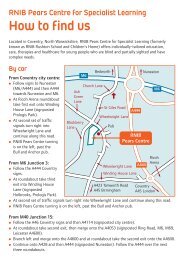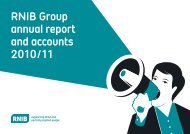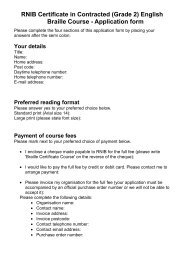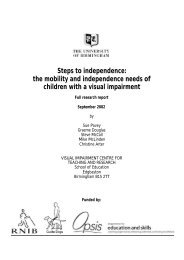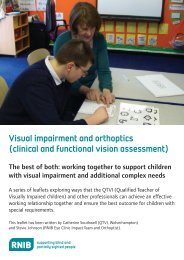Download Complete Report (PDF 1.19mb) - RNIB
Download Complete Report (PDF 1.19mb) - RNIB
Download Complete Report (PDF 1.19mb) - RNIB
Create successful ePaper yourself
Turn your PDF publications into a flip-book with our unique Google optimized e-Paper software.
6. Core functional requirements<br />
6.1. Summary<br />
Partial sight and blindness appear to account for more differences in DAB radio use<br />
than dyslexia or dexterity impairment. Interviewees with dyslexia and dexterity<br />
impairment used radio more like the ‘sighted control’ group than they did the blind<br />
and partially sighted sample. This was in terms of ways of controlling the equipment<br />
and listening patterns.<br />
Core functional requirements relate to basic listening (switching on, tuning in). The<br />
most common and important use of digital radio was simply listening to content.<br />
Blind and partially sighted interviewees tended to listen to a lot more radio than the<br />
sighted samples, who did not appear to differ in their digital radio consumption.<br />
Interviewees across all samples evidenced a range of media that they used for<br />
providing information (eg radio, television, newspapers, internet). Overall,<br />
participants with dyslexia, dexterity impairment, and ‘sighted controls’ reported<br />
more reliance on television for their information needs than did the blind and<br />
partially sighted sample who placed more emphasis on radio to fulfil this need.<br />
All interviewees, irrespective of their sample, listened to a small range of radio<br />
stations and primarily expected good quality programming, easier to use and<br />
aesthetically pleasing products from digital radio.<br />
Blind and partially sighted respondents to the Short Preference Survey were more<br />
likely to report having some difficulty related to getting lost in a menu or having<br />
difficulty with the settings compared to the nationally representative sample.<br />
Blind and partially sighted respondents to the Short Preference Survey dealt with<br />
difficulties differently to the nationally representative sample. Blind and partially<br />
sighted respondents were more likely to switch the product off and on again and<br />
only one in five reported consulting the manual (likely because of poor accessibility)<br />
whilst the nationally representative sample were more likely to carry on pressing<br />
buttons or to consult the manual.<br />
Strategies observed and reported on by the blind and partially sighted interviewees<br />
including memorising button press sequences (eg for setting presets) after having<br />
been shown by a sighted person (shop assistant, partner, friend), ‘feeling around’ for<br />
button cues (eg large size button to indicate ‘on’, button positioning) and sticking<br />
50


